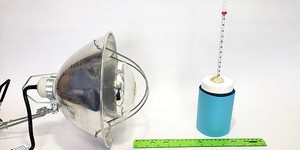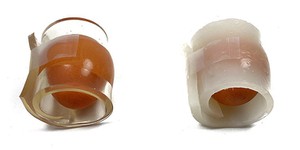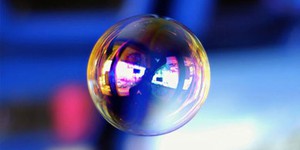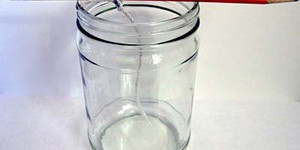Others Like “Diaper Science: How Hydrogels Absorb Water” (top 20 results)
|
There are three different kinds of polymers used for kitchen plastic wrap: low density polyethylene (LDPE) (e.g., Handiwrap or Glad Wrap), polyvinyl chloride (PVC) (e.g., Reynolds PVC Foodservice Wrap or Boardwalk PVC Food Wrap Film) and polyvinylidene chloride (PVdC) (note: Saran Wrap used to be made with polyvinylidene chloride, but has switched to polyethylene. You will need to search for another brand that uses PVdC if you want to test it). Which of these materials is least permeable to…
Read more
Why is it more comfortable to wear light-colored clothes on a hot summer day? Why wear a dark-colored jacket for early-morning fishing on a cold lake? How much difference can it make? Here's a project where you can quantify how much difference color makes for absorbing heat.
Read more
Many foods, such as fresh fruits, vegetables, or eggs, are packaged in plastic to protect them from damage during handling and transport. But is plastic the best choice? What if a more sustainable and biodegradable material could replace it? Researchers have begun exploring hydrogels—squishy materials that can hold a lot of water—as alternative packaging materials. In this science project, you will make your own hydrogels from gelatin and cornstarch and investigate what ratio of…
Read more
Making your own bubble solution is fun, but sometimes the bubbles don't seem to work as well as the solutions you buy in the store. In this experiment you can test if adding corn syrup or glycerin to your bubble solution will make it just as good as the stuff you can buy. This experiment will have you blowing bubbles!
Read more
You are looking under your bed for that video game you want to play, when you come across a real treasure—an open bag of potato chips that you forgot about! A crispy and salty potato chip is a tasty treat. But wait! This potato chip is not crisp and does not taste as great as it should. What happened? The chips have gone rancid! In this cooking and food science fair project, you will look into what factors turned your chips rancid.
Read more
When something goes wrong, do you like to try to figure out why? Engineers do this all the time. They even have a fancy name for it: failure analysis. Understanding how different materials break is an important part of failure analysis. Here's a project with one approach to studying the way things break.
Read more
Crystals come in all different shapes and sizes. However, the purest and cleanest crystals are usually also the ones that grow to be the largest in size. In this science fair project, you will compare the size and shape of crystals grown in three different temperature conditions: room temperature, in the refrigerator, and in an ice bath. With just water and borax, a household cleaning product, you can discover the best recrystallization method for growing large, pure crystals.
Read more
The oceans are a precious natural resource, part of Earth's carbon cycle. But what happens if the oceans absorb too much carbon dioxide? Many scientists are concerned that the increased absorption of carbon dioxide is causing them to become more acidic. What impact does that have on the marine life? In this ocean science fair project, you will demonstrate ocean acidification and investigate the effect on the shells of marine life.
Read more
Plastics are made of polymers, chemical structures containing many repeated subunits. How does the polymer type of a plastic affect the biodegradability of the plastic? Do research on how plastic is made and what types of polymers are used for making different plastics. Can you learn to make your own plastic? What materials can you use for making plastic that is biodegradable? Test biodegradability by burying plastic samples for different lengths of time. (Kadar, 2004) Reducing solid waste and…
Read more
There are currently two different kinds of polymers used for kitchen plastic wrap: low density polyethylene (LDPE) (e.g. Saran or Glad Wrap) and polyvinyl chloride (PVC) (e.g. Reynolds PVC Foodservice Wrap or Boardwalk PVC Food Wrap Film). Which of these materials is less permeable to oxygen? When you slice an apple, the surface of the slice turns brown as the apple is oxidized. Can plastic wrap seal out oxygen and prevent the apple from browning? Which plastic wrap works best? Do…
Read more
|
Explore Our Science Videos
Tallest Tower: 2021 Engineering Challenge
Identify Road Signs with Google's Teachable Machine
DIY Glitter Surprise Package with a Simple Circuit










